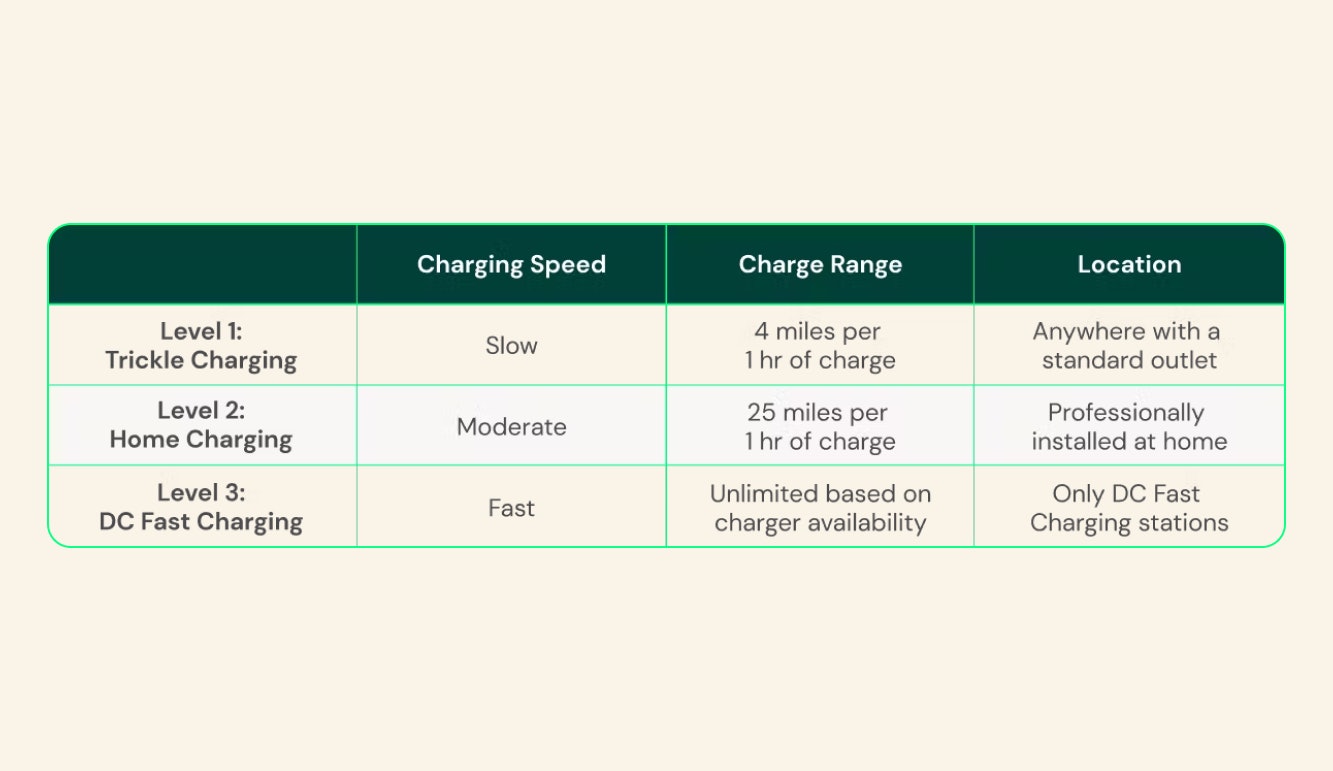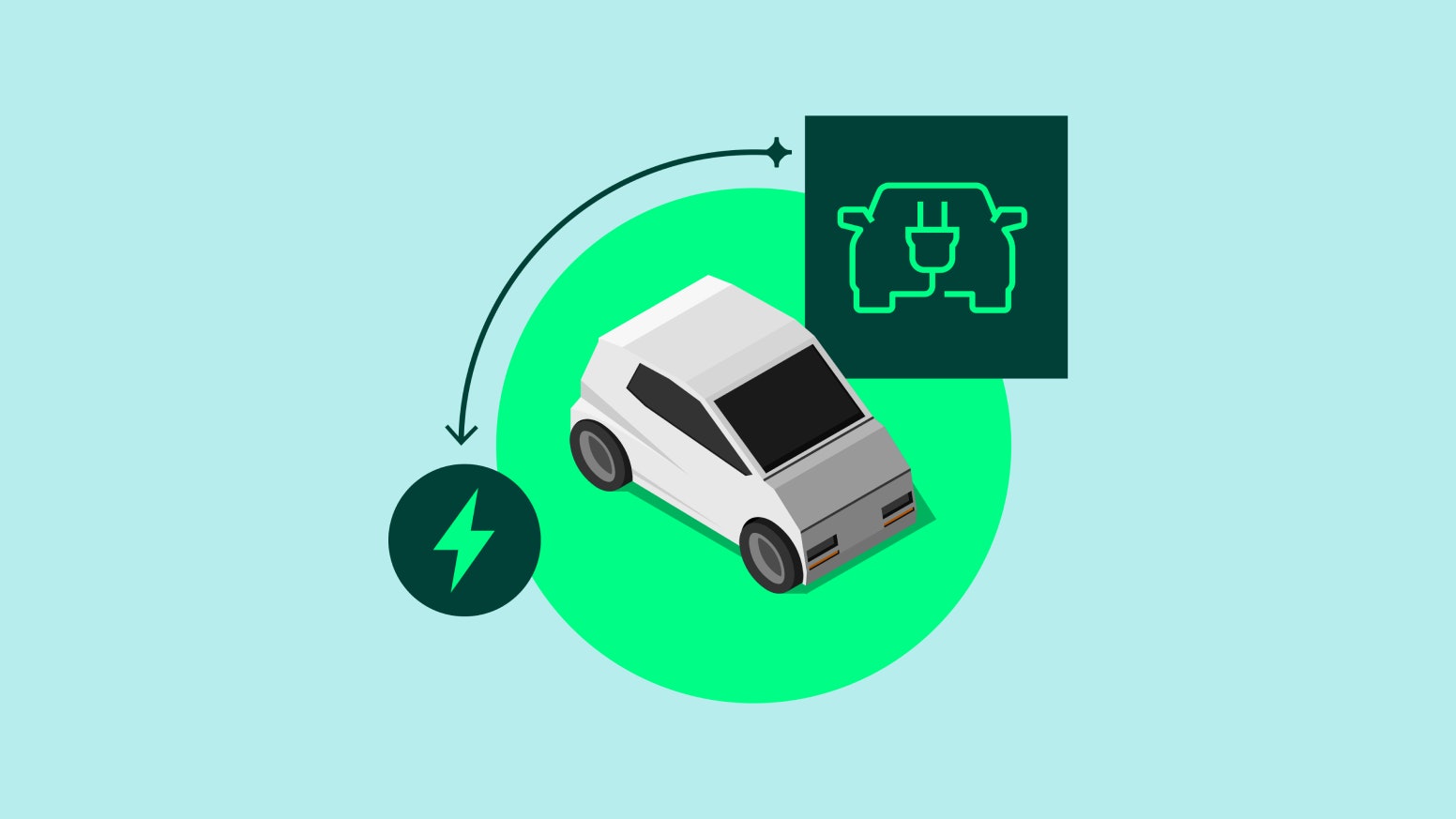How to choose the right EV charger for your home

If you purchase a BEV or a PHEV, you’ll need to charge your vehicle regularly — and depending on your driving habits, you may need to buy dedicated hardware for charging. We recommend deciding on which charging option suits you before you purchase your EV, so you can factor in the additional cost.
Do you need a home charger?
Once you make your EV purchase, a major thing to consider is how you will charge your vehicle. Although very convenient, installing a home charger may not be necessary or possible for every EV owner. Charger and installation costs along with the type of dwelling you live in play an important role in your EV charger decision.
Most people who decide not to install a charger at their home rely on public charging infrastructure around their city or chargers at their workplace. There are several popular apps for exploring available public charging infrastructure including PlugShare, ChargeHub, and OpenChargeMap.
If there are chargers in areas you commonly drive to like grocery stores, places of worship, strip malls, etc., and you don’t drive your electric vehicle more than ~30 miles per day, then there is a good chance that you can depend on this public infrastructure and your Level 1 charger, instead of installing your own dedicated Level 2 charger.
Types of EV chargers
There are three charging levels available to EV owners: Level 1, Level 2, and Level 3.
Level 1: Trickle charging
Level 1 cables typically come standard with any new electric vehicle and use a standard wall outlet to plug in your car just as you would your mobile phone. The amount of “juice” available out of a standard wall plug is limited, however, so charging speeds are slow (often around 4 miles of range per hour of charge, or 30 miles of range per night).
People who have short commutes can often get by on just a Level 1 charger, especially if they have charging available at work or a nearby supermarket for the occasional top-off.
Level 2: Home charging
Level 2 chargers require professional installation and use a dedicated, 240V circuit (like a clothes dryer) to shove electrons into the car’s battery faster than they can with a standard wall outlet. Level 2 chargers can provide up to 25 miles of range for every hour of charge, or 200+ miles of range per night. The exact amount of range per hour depends on the power rating of the charger unit itself and the power rating of your vehicle.
People who have more demanding commutes or don’t want to feel like they’re barely making ends meet on a 25 miles per night budget install a Level 2 charger in their garage or next to their driveway.
Level 3: DC Fast Charging tech upgrades
These aren’t chargers you install at home, but rather ones you find at dedicated charging stations, at grocery stores, and other public places (it would be too expensive to install at home). If you take lots of longer road trips or don't live in a place where you can install a charger at home, strongly consider getting an EV equipped with DC Fast Charging technology.
Most new electric cars have the capability to use DC Fast Chargers but it’s not a standard feature on some.
Charger comparison chart

Things to consider before purchasing a home charger
Charging your EV at home is not only convenient, it also makes your overall electric vehicle ownership and driving experience easier than ever. From charger compatibility to maximum charging rates, installation types to overall costs, let’s take a look at a few things to consider before flipping the switch on a home charger.
Charger compatibility
Level 2 home chargers will, in general, cost you between $200 and $800 depending on the model you choose (not including installation). In order to determine which model charger is compatible with your vehicle, you’ll first need to identify which connection type your vehicle’s charging port accepts.
- Tesla has its own proprietary standard (the Tesla “Supercharger”)
- Nissan (with the Leaf) is staying with the Asian CHAdeMO standard
- The rest of the industry in the United States has settled on SAE J1772 (also called CCS)
Maximum charging rate
The next factor to consider is the vehicle’s maximum charging rate. Many newer BEV’s will charge at 7kW+ of power but older electric vehicles and some PHEVs may charge at a speed as low as 3.3kW.
Buying chargers that supply more power than your vehicle’s charging rate can be a waste of money unless you’re planning to buy a newer EV soon and want your installation to be future-proof. If you want to save some cash, you can purchase a charger with a lower power rating than your electric vehicle, but just be aware that your vehicle may charge slower than your driving habits demand. There are also some chargers that can automatically detect the maximum power of your vehicle’s charging port and lower the charge power accordingly.
If the upfront cost of an EV charger is a deterrent, some companies have started offering financing plans which allow you to pay in small monthly increments over the course of your electric vehicle lease. Local rebates are also available fairly often from electric utilities to cover the cost of the charger and/or installation.

EV charger installation
Before you install an EV charger (EVSE) in your home, you’ll first need to find installers, select a quote, and decide on an installation type.
Selecting an installer
There are several tools available for finding installers in your area. Amazon offers a service, you can look for installers on community sites like Yelp, or reach out to friends or family for recommendations.
We recommend collecting 3 to 4 different bids from electricians in your area as we’ve seen bid amounts vary 100% to 200% between installers. Expect them to ask for a site visit or photos of your electrical panels. It can often take a lot of time to manually give all potential contractors the same information, so shopping around can save money, but expect to spend a few hours finding the best installer. It’ll be worth it in the end.
Installation types
There are generally two methods of installation for Level 2 chargers: hardwired or plug-in.
- Hardwired refers to running a conduit from an electrical sub panel directly into the charger.
- Plug-in refers to running a conduit from an electrical sub panel into a NEMA 14–50, 240V outlet (these look similar to a dryer or oven outlet) — then plugging the charger into the outlet. Plug-ins also allow you to unplug and take the charger with you if you end up moving.
Installation costs
The cost of installation varies wildly from $1000 to $2,500, depending on which contractor you choose, whether or not your subpanel needs to be upgraded, and how far from the nearest subpanel your charger will be mounted. Most installations for modern houses cost on average, $1,200, and take 2–4 hours to complete. Until an electrician takes a look, it’s difficult to get an accurate estimate of the costs of charger installation. Sites like Fixr.com can help you get estimates from electricians near you by simply entering your zip code.
Installation
Generally, installation is relatively straightforward. Electricians run a wire from a subpanel circuit that can handle the charger’s power supply to the mounted box containing the charging circuitry. As with any job dealing with electricity, we highly recommend leaving this task to the professionals.
Charging from a HOA or multi-family unit
Installing chargers in HOAs, multi-family units, and anywhere else that offers “common” electrical junctions, with energy costs shared by several parties, can be complicated for several reasons:
- These types of housing often don’t have parking spots to install a charger next to
- The parking spots are not assigned so there’s no guarantee you’ll get to park at your charger
- Parking spots may be deeded but too far from the electrical closet
- When there is no option but to use a common electrical junction, you’ll need a solution that keeps track of how much energy your charger is using so that you can compensate the HOA or building owner for the extra juice used by your EV
But don’t fret, there are several companies, like GreenLots and ChargePoint, that are working to make the process easier, with more and more apartment complexes installing EV charging stations for their tenants.
Sources:
https://www.chargepoint.com/drivers/apartments-and-condos/
https://greenlots.com/industry/apartments-condos/
https://www.plugshare.com
https://chargehub.com/en/
https://www.fixr.com/costs/home-electric-vehicle-charging-station
https://www.fixr.com/costs/home-electric-vehicle-charging-station
https://www.homeserve.com/en-us/blog/cost-guide/ev-charging-station-installation/

Sign up for solar savings
Sign upSimilar articles

The powertrain, as its name suggests, provides power to your electric vehicle. There are three main types or classes of EV powertrains, each with their own pros and cons.

Technological advancements have had a major impact on climate change — in both positive and negative ways. Learn about how technology has affected global warming now.

Whether you’re searching for a clean energy alternative or looking for ways to reduce your electric bill, you’ve probably thought about installing solar panels on your property. But do solar panels really save you money? And if so, how much? Is the upfront cost worth it?